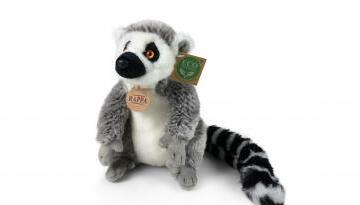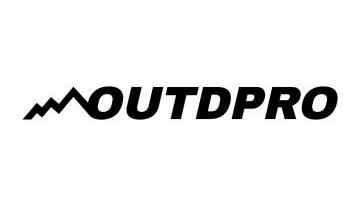Monitorujeme 1663 zdrojov
 Google Dooles 22.11.2023 08:15
Date: November 3, 2023
In honor of Native American Heritage Month, today’s Doodle celebrates renowned Chiricahua Apache sculptor, painter, and book illustrator Allan Haozous . Created by Albuquerque-based , today’s artwork depicts Haozous in his element working on a sculpture of an Apache man and woman. On this day in 2012, his sculpture The Future was unveiled at the Autry Museum of the American West.
Haozous was born on June 30, 1914 in Apache, Oklahoma, to two parents who had experienced the trauma of being held as political prisoners for 27 years due to their tribal affiliation. Haozous was born soon after their release and grew up on a farm where he learned about his culture through stories and songs his father shared. When he turned 20, he moved to New Mexico and started painting at the Santa Fe Indian School.
Haozous’ skill was quickly recognized and commissions started rolling in. In 1939 he created murals for the New York World’s Fair, the Department of the Interior in Washington, D.C., and the Golden Gate Exposition. Haozous was commissioned by the Haskell Institute to create a memorial honoring the Native American soldiers who had died in WWI. This piece, Comrade in Mourning , was Haozous' first marble sculpture. The following year, he received the Guggenheim Fellowship for sculpting and painting, which allowed him to dedicate more time to his craft.
Haozous taught the next generation of Native American artists from 1951 to 1975, both at the Inter-Mountain Indian School in Utah and the Institute of American Indian Arts in Santa Fe, where he created the sculpture department. During this time, he showed his artistic range by creating hundreds of paintings, illustrating several children’s books, and making carvings from bronze, stone, and steel.
Haozous left teaching in 1975 and produced almost 1,000 sculptures in various mediums during his retirement which garnered international acclaim. He was inducted into the Oklahoma Hall of Fame in 1985 and was the featured artist of the 2002 Winter Olympics hosted in Utah. Over his career he received many awards for his art and was the first Native American to win the National Medal of Arts.
Today, many enjoy Haozous’ pieces which are displayed across several cities including, Santa Fe, Vancouver, London, Paris, Tokyo, and a few D.C. museums including the Smithsonian Museum of American Art.
Guest Artist Q&A with Lynette Haozous
Today’s Doodle was illustrated by Albuquerque-based . Below, she shares her thoughts behind the making of this Doodle:
Q: Why was this topic meaningful to you personally?
A: Dagot’ee! When I was little, I would always see one of Allan Houser Haozous’ bronze sculptures of Apache People in downtown Phoenix, AZ. From my point of view, those Apache figures looked as tall as all those buildings around it. That solidified in my mind an image of proud Apache people, standing tall, still here, resilient and strong. Seeing that representation of myself, that representation of my Apache People and culture represented in art out in the world was so meaningful to me, it empowered me as a Chiricahua Apache woman and artist throughout life.
Q: Did you draw inspiration from anything in particular for this Doodle?
A: I drew inspiration from Mr. Houser’s bronze Apache sculptures, and the story of seeing these in person when I was young. I also used reference photos of him working on huge sculptures and seeing how he looked at his pieces with such a fierce concentration but a deep reverence for his creations. I imagined him taking care of these creations like Ancestors. Allan’s innovative abstract sculptures have been a signature style of his, and I wanted to create a sculptural form similar to those pieces, so I drew upon some of his Apache, and Pueblo, women and child abstract pieces. I’m Chiricahua Apache and also part Diné and Taos Pueblo, so I could really resonate with how he was inspired by Taos Pueblo People, and I created the abstract form more in the style of his Taos/Pueblo figures.
Apache star and mountain designs are incorporated for the background and foreground border. There is a yucca plant to represent the desert and homeland of Apache people, it was also used for medicinal purposes. An Apache wikiup sits on the landscapes horse on line, while the Sun, , encircles the “Three Sisters Mountain”. “Three Sisters Mountain” is one of four mountains sacred to Chiricahua/ Apache People. There are some Apache colors, , designs, Apache shield designs, worked throughout the piece as well.
Q: What message do you hope people take away from your Doodle?
A: I hope that people see that Allan Houser Haozous’ life and work told the story of Apache People’s resistance, resilience, history, and beauty. I’d like for people to see Native People, and their history and resilience through this piece. I’d like for people to know how influential Mr. Houser was for not only Native Artists but for Native People and our history, he inspired many to be fearless in their creativity and to push the boundaries of what is considered “Native Art”, and took back our narratives and pushed it into the public consciousness to be respected and recognized. From Mr. Houser’s resiliency in being “the first Apache child born-free from being a prisoner of war”, to creating a life of art and opening doors for Native Artists in the world, his contribution to Native Art and History is everlasting.
Location:
,
,
Tags:
Google Dooles 22.11.2023 08:15
Date: November 3, 2023
In honor of Native American Heritage Month, today’s Doodle celebrates renowned Chiricahua Apache sculptor, painter, and book illustrator Allan Haozous . Created by Albuquerque-based , today’s artwork depicts Haozous in his element working on a sculpture of an Apache man and woman. On this day in 2012, his sculpture The Future was unveiled at the Autry Museum of the American West.
Haozous was born on June 30, 1914 in Apache, Oklahoma, to two parents who had experienced the trauma of being held as political prisoners for 27 years due to their tribal affiliation. Haozous was born soon after their release and grew up on a farm where he learned about his culture through stories and songs his father shared. When he turned 20, he moved to New Mexico and started painting at the Santa Fe Indian School.
Haozous’ skill was quickly recognized and commissions started rolling in. In 1939 he created murals for the New York World’s Fair, the Department of the Interior in Washington, D.C., and the Golden Gate Exposition. Haozous was commissioned by the Haskell Institute to create a memorial honoring the Native American soldiers who had died in WWI. This piece, Comrade in Mourning , was Haozous' first marble sculpture. The following year, he received the Guggenheim Fellowship for sculpting and painting, which allowed him to dedicate more time to his craft.
Haozous taught the next generation of Native American artists from 1951 to 1975, both at the Inter-Mountain Indian School in Utah and the Institute of American Indian Arts in Santa Fe, where he created the sculpture department. During this time, he showed his artistic range by creating hundreds of paintings, illustrating several children’s books, and making carvings from bronze, stone, and steel.
Haozous left teaching in 1975 and produced almost 1,000 sculptures in various mediums during his retirement which garnered international acclaim. He was inducted into the Oklahoma Hall of Fame in 1985 and was the featured artist of the 2002 Winter Olympics hosted in Utah. Over his career he received many awards for his art and was the first Native American to win the National Medal of Arts.
Today, many enjoy Haozous’ pieces which are displayed across several cities including, Santa Fe, Vancouver, London, Paris, Tokyo, and a few D.C. museums including the Smithsonian Museum of American Art.
Guest Artist Q&A with Lynette Haozous
Today’s Doodle was illustrated by Albuquerque-based . Below, she shares her thoughts behind the making of this Doodle:
Q: Why was this topic meaningful to you personally?
A: Dagot’ee! When I was little, I would always see one of Allan Houser Haozous’ bronze sculptures of Apache People in downtown Phoenix, AZ. From my point of view, those Apache figures looked as tall as all those buildings around it. That solidified in my mind an image of proud Apache people, standing tall, still here, resilient and strong. Seeing that representation of myself, that representation of my Apache People and culture represented in art out in the world was so meaningful to me, it empowered me as a Chiricahua Apache woman and artist throughout life.
Q: Did you draw inspiration from anything in particular for this Doodle?
A: I drew inspiration from Mr. Houser’s bronze Apache sculptures, and the story of seeing these in person when I was young. I also used reference photos of him working on huge sculptures and seeing how he looked at his pieces with such a fierce concentration but a deep reverence for his creations. I imagined him taking care of these creations like Ancestors. Allan’s innovative abstract sculptures have been a signature style of his, and I wanted to create a sculptural form similar to those pieces, so I drew upon some of his Apache, and Pueblo, women and child abstract pieces. I’m Chiricahua Apache and also part Diné and Taos Pueblo, so I could really resonate with how he was inspired by Taos Pueblo People, and I created the abstract form more in the style of his Taos/Pueblo figures.
Apache star and mountain designs are incorporated for the background and foreground border. There is a yucca plant to represent the desert and homeland of Apache people, it was also used for medicinal purposes. An Apache wikiup sits on the landscapes horse on line, while the Sun, , encircles the “Three Sisters Mountain”. “Three Sisters Mountain” is one of four mountains sacred to Chiricahua/ Apache People. There are some Apache colors, , designs, Apache shield designs, worked throughout the piece as well.
Q: What message do you hope people take away from your Doodle?
A: I hope that people see that Allan Houser Haozous’ life and work told the story of Apache People’s resistance, resilience, history, and beauty. I’d like for people to see Native People, and their history and resilience through this piece. I’d like for people to know how influential Mr. Houser was for not only Native Artists but for Native People and our history, he inspired many to be fearless in their creativity and to push the boundaries of what is considered “Native Art”, and took back our narratives and pushed it into the public consciousness to be respected and recognized. From Mr. Houser’s resiliency in being “the first Apache child born-free from being a prisoner of war”, to creating a life of art and opening doors for Native Artists in the world, his contribution to Native Art and History is everlasting.
Location:
,
,
Tags:
NEWS.SK odporúča
Top firmy
Nie sú nájdené žiadne články.
Nie sú nájdené žiadne články.


















